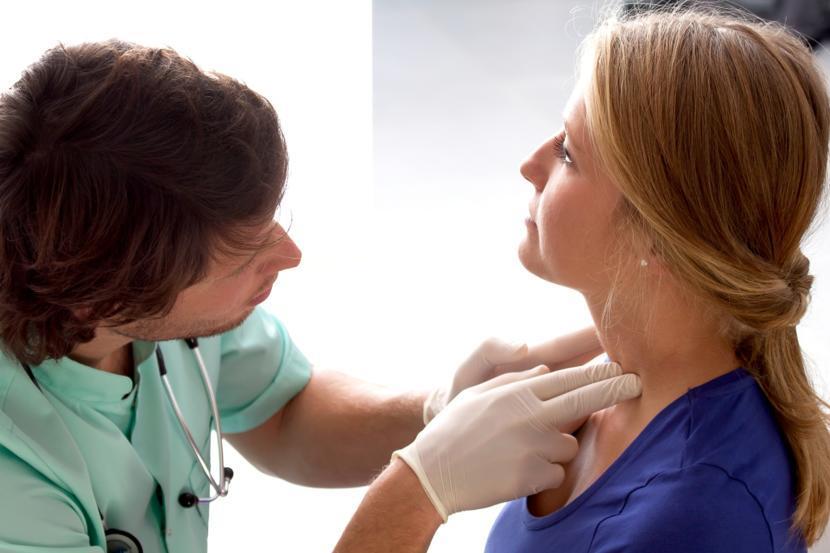Advancements in Lymphedema Surgery After Breast Cancer

Until now, many were relatively unaware that it is possible to treat severe cases of lymphedema with surgery, and the results are shown to be quite effective.
What is lymphedema?
Lymphedema is a chronic condition that is characterized by discomfort that results from lymph fluid collecting around where lymph nodes have been removed post-breast cancer surgery. This is especially common because, during lumpectomies or mastectomies, lymph nodes are often removed from the axilla, or the armpit. The reason this is done is to analyze whether or not the cancer has spread to other areas of the body, but lymphedema is often the unattractive side effect to the procedure.
Lymphedema is often the cause of swelling of limbs, resulting in decreased mobility which can be debilitating for many. Around 15 percent to 25 percent of patients who have had the procedure of a lymph node dissection are estimated to develop lymphedema, and the risk for those who have had a sentinel node biopsy is around 5 percent to 17 percent. These statistics are staggering, and are made all the more intimidating to survivors because there is no benchmark for when they will be safe from lymphedema, as it can crop up at any point after the procedure.
Symptoms of lymphedema
Because it is possible to find yourself confronted with lymphedema at any stage, it is crucial to keep an eye out for symptoms. These include a heavy or tight feeling within limbs, or swelling or irritation in the arm on the side where the procedure occurred.
Treatments
For those who do have lymphedema, treatments are available. Decongestive therapy, compression therapy, and lymphatic massage are able to aid in transporting the fluid out of the area where there is congestion. When these treatments are administered properly, symptoms of the lymphedema drop dramatically. However, for some, they aren't enough.
In severe cases of lymphedema, there are surgeries available. However, they are often considered to be experimental and are not accessible to many. The types of surgery include liposuction (focusing on the affected limb), lymphovenous bypass, and vascularized lymph node transfer. However, these approaches are not for everyone. They should only be considered if the lymphedema is severe and no other form of treatment has been effective. The positive side to it is, for those who are not responsive to other treatments, increasing numbers of plastic surgeons are beginning to use this surgery, and it has been shown to be successful in lessening the amount of fluid congestion within the affected limb.
Surgical treatments
Liposuction for lymphedema is much like any other type of liposuction surgery you may have heard of, as it removes fat. The vacuum-like tool is able to suck out the fat that is stuck in the limb. Breastcancer.org explains further, "this doesn't cure the lymphedema, but it can get the arm down to a size the patient would then have to maintain with bandaging at first, followed by wearing a compression sleeve during the day and using other forms of compression at night." Dr. Graham Schwarz, who is a reconstructive surgeon, explains further, "while liposuction can reduce limb volume, it does not obviate the need for lifelong compressive therapy for maintenance. In Contrast, following a successful VLNT, compression therapy is used initially but may not be needed long-term."
A revolutionary operation
Dr. Richard Klein is responsible for the completion of the very first vascularized node transfer surgery, which took place in Florida. Lymph node transfers are when healthy lymph nodes from one area of the body are extracted and put into where there is a blockage creating lymphedema. It is his belief is that more modern surgical approaches and surgeries are significantly better than the old ones that have been used for the treatment of lymphedema in the past. Klein explains more about the procedure, "we select the [donor] area carefully so it doesn't cause lymphedema where we harvest it from, and then we move a small cluster of lymph nodes with a small artery and a vein to the location where they're needed. Then, we reattach the arteries and the veins. Over a period of a couple months, the lymph nodes will start creating new lymphatic channels that had previously been cut and then new channels form that can begin draining the limb that's blocked."
Lymphovenous bypass surgeries are also available; however, their applications and successes have thus far proven to be limited. Dr. Richard Klein is an expert in reconstructive surgery and has referred to lymphovenous bypass surgery by stating, "that surgery has been around a little bit longer than the lymph node transfer. [It] revolves around finding one to three lymphatic [channels] in the extremity, making a small incision to bypass it into a vein that's adjacent to it. So basically, I've just short-circuited the lymphatic system into the venous system. It doesn't work very well, it works for limited areas, and those little connections often have a tendency to clot, so it's not usually as successful as lymph node transfer."
Pros and cons of lymph node transfers
While Klein's surgeries have definitely made progress, there is some disagreement about the efficacy and safety of these procedures. Klein reports that from 50 patients with upper extremity lymphedema who took place in the surgery, "we had 60 percent volume reduction overall in our first 50 patients. But the improvement is not only in volume reduction. There's also an improvement in pain. We had an 80 percent improvement in pain and a 70 percent reduction in recurrent infections." These are very powerful results that would lead many to believe the procedure is right for them if they experience pain or problems of that type.
However, Dr. Constance Chen, a board-certified plastic surgeon and member of the medical advisory committee of the National Lymphedema Network, feels the need to clarify that this surgery is not right for everyone, and it is quite possible that other patients will not see the types of success that some have. She explains, "typically, patients state that they feel that their limb with lymphedema feels less heavy and painful, but it is sometimes difficult for the outside observer to see significant and measurable changes. The most important thing to consider is that lymph node transfer is not a magic bullet, and results are usually limited at best."
However, that does not mean that she would dismiss it altogether. She explains that many patients will experience "improved use of the limb when compared to their use before surgery. Patients get the best results with significant lymphedema therapy after surgery, and it is unlikely that their lymphedema will completely resolve. The hope is that the symptoms of their lymphedema will improve, even if it is still visible."
So, who will best benefit from this surgery? Chen says that it is someone who is healthy, does not smoke, and is at their ideal body weight. The reason for these specifications are that nicotine consumption can result in clogging, which actively works against the transfer of lymph nodes. People must be at their ideal body weight because those who are significantly overweight have a heightened likelihood of developing lymphedema at the donor site. Also, the ideal candidates are supposed to have maximized conventional lymphedema treatment, usually with stage 1 or 2 lymphedema.
















